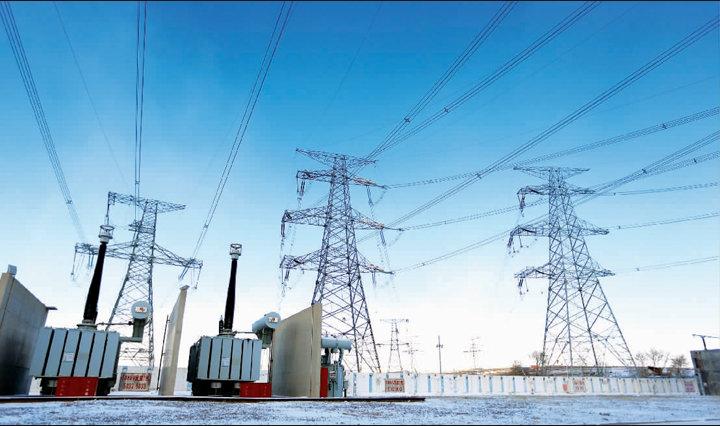Why should our motor choose 50HZ AC?
The 50 Hz alternating current is used for the motor in China, but due to various reasons, the alternating current used in each country is not the same.
For example, in the United Kingdom and the United States, they choose 60Hz AC power, because they use binary.
However, with the upgrade and development of the power system in various countries of the power system.
Many countries have adopted the post-decimal system and developed into the mainstream, so the frequency is 50Hz.
Of course, there is also a situation where some countries have two kinds of alternating currents, such as 50Hz in the west and 60Hz in the east.
Why does our country choose 50Hz AC instead of 5Hz or 400Hz?
What happens if the frequency is low?
When the frequency is 0, this is what we call DC.
Before, a scientist wanted to prove that the AC is dangerous, so he experimented with small animals and died with AC.
Later, many scientists proved that if the current is the same, the duration of alternating current that we humans can tolerate is lower than that of direct current, which shows that alternating current is more dangerous than direct current.
However, if we use AC transmission, the current will be changed when the plug is pulled out, so when there is a current crossing zero.
we can use this time to interrupt the line current by using an arc extinguishing device.
However, the DC transmission current mentioned above will not change its direction.
so we do not have time to cross the zero current to use the arc-breaking device, which is difficult to achieve.
So, what happens when we use AC transmission?
The first problem is that it will affect the efficiency of the transformer.
The transformer relies on the change of the magnetic field on the primary side to induce a boost or a buck on the secondary side.
The induction of magnetic field changes will become weaker as the frequency becomes slower.
If the frequency is 0, there is no induction at all, so the frequency is too low.
The second problem is that it will affect the power of electrical equipment.
For example, at the same frequency, the power output of the engine will change with the size of the engine itself, that is, the larger it is, the greater the output power, which is also The reason why diesel engines are larger than petrol is because large diesel engines can drive heavy vehicles such as bus trucks.
Similarly, the motor requires both a small size and a large output power.
There is only one way to increase the speed, which is why the AC frequency cannot be too low, because we need a small but powerful motor.
It can be seen from the above that power and frequency are positively correlated within a certain range.

If the frequency is low, it will have an impact. What will be the consequences if the frequency is high?
What if we set the frequency to 1000 Hz?
According to the above, the consequence of a large frequency is obviously that it will cause increased losses of lines and equipment.
and another is that the generator speed is too fast.
Let’s talk about the problem of loss first. We know that all electrical equipment and lines have reactance.
However, the relationship between reactance and frequency is positively correlated.
The reactance will increase as the frequency increases, so the The greater the active power, the less active power is transmitted.
As far as the current AC transmission is concerned, the reactance at 50 Hz is about 0.4 ohms, which is about 10 times the resistance.
If it is increased to 1000 Hz, the reactance will be 8 ohms.
Therefore, for high-voltage transmission lines, the effective way to increase the transmission power is to reduce the reactance.
There is also a capacitive reactance, which is relative to the reactance.
The relationship between the capacitive reactance and the frequency is negatively correlated.
The capacitive reactance will decrease as the frequency increases, and the current leakage from the transmission line will be Increase.
If the frequency is set high, then the leakage current will increase.
In addition to the problems mentioned above, there is also the problem of the speed of the generator.
Most of the generators we use today are single-stage machines, in other words, a pair of magnetic poles.
Therefore, if you emit 50Hz, the rotor must reach 3000 rpm.
We know that if the engine of the car reaches this speed, you can obviously feel that the engine is vibrating.
The engine is coming out, yes, it is so exaggerated!
This is true even for automobile engines, not to mention a solid iron pimple rotor and steam turbine weighing 100 tons, which is also the reason for the high noise of power plants.
It is not easy to say that a steel rotor weighing 100 tons will turn 3000 revolutions per minute.
If the frequency is three or four times higher, it is estimated that the generator will fly out of the plant.
Of course, everything has inertia, so the heavy rotor has great inertia, which is also called the inertial system of the power system,
which of course is premised on safe and stable operation.
It is precisely because of this limitation that this new power source such as wind power and solar power can challenge traditional power sources from time to time.
In summary, we conclude:
The reason why the frequency cannot be too low: the transformer can have high efficiency, and the motor can be small and powerful.
The reason why the frequency cannot be too high: the loss of lines and equipment can be small, and the generator speed does not have to be too high.
Therefore, according to experience and habits, our electric energy is set at 50 or 60 Hz.